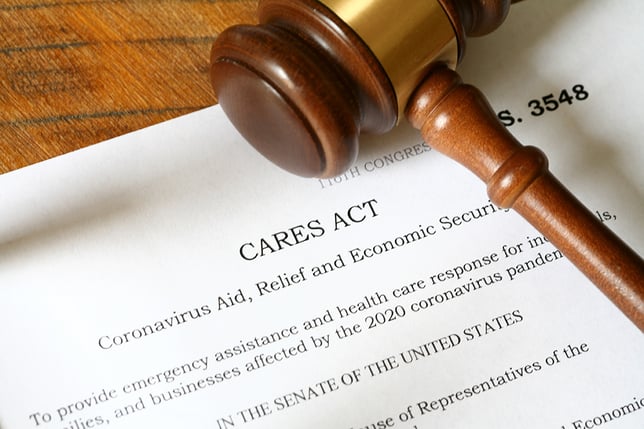News, covid19, CARES Act, SECURE Act
How the 'SECURE' and 'CARES' Acts Have Changed IRA Withdrawal Rules

At the end of 2019 and now in the midst of the COVID-19 pandemic, Congress passed two laws that may affect the way our clients enjoy their retirement. These laws were the Setting Every Community Up for Retirement Enhancement (‘SECURE’) Act and the Coronavirus Aid, Relief and Economic Security (‘CARES’) Act.
The SECURE Act
Congress presented the SECURE Act as a way to encourage small employers to offer retirement plans; but the law may also affect you and your loved ones’ retirement account particularly regarding required minimum distributions and inherited IRAs.
The SECURE Act has changed regulations for those born after June 30, 1949, allowing such seniors to delay taking their required minimum distributions until April 1st of the year they reach 72.
If you fall under that age group, you can allow your assets to grow for an additional year and a half without taking withdrawals. Additionally, SECURE allows you to continue to contribute to your IRA after the age of 72, even while you are required to withdraw. You can still, if necessary, withdraw at any time after age 59 ½ without a penalty, other than paying taxes on the amount withdrawn.
Additionally, another change brought by the SECURE Act is for inherited IRAs. These must now be entirely withdrawn within 10 years of the death of the initial owner, as opposed to allowing withdrawals based on the beneficiaries’ own life expectancy under the previous regulations.
This restriction only applies to those retirement plans inherited after 2019 and there are certain exceptions. This new inherited IRA rule doesn’t apply to spouses of the deceased owner who can continue to convert inherited IRAs to their own ownership. Additionally, minor children, individuals with disabilities and chronic illnesses, and those who are up to 10 years younger than the original owner can continue to stretch withdrawals based on their own life expectancies.
The SECURE could also affect your trust, especially if you have a Conduit trust. In Conduit trusts with at least one non-eligible designated beneficiary, SECURE’S 10-year limit for distributions applies. On the other hand, if the beneficiary falls under one of the exceptions mentioned earlier (spouse, minor children, etc.), the withdrawals can be based on the beneficiary’s life expectancy. We recommend you look at this website and this website for more details.
The CARES Act
Dealing with the COVID-19 pandemic, the CARES Act made it so there is no required minimum distributions for 2020, and loosened withdrawal regulations for those under the age of 59 ½ who have been effected by COVID-19.
Though these changes will only be applicable for this year, they might make life easier for those whose incomes are down during the crisis.
If you, your spouse, or a dependent has been diagnosed with COVID-19 or suffered adverse financial consequences due to the coronavirus, you can withdraw up to $100,000 before the age of 59 ½ and not be subject to the usual 10% tax. You can also report withdrawals of up to $100,000 as income over three years or treat such withdrawals as a loan to be repaid within three years with no taxes paid.
Even if you’ve already taken a distribution for 2020, you may be able to rollover the distribution to an IRA or eligible retirement plan under certain circumstances. These circumstances include, the rollover has to be within 60 days of the distribution (the IRS extended this until July 15, 2020 for distributions taken within Feb 1 and May 15, 2020), the distribution can’t be from an inherited IRA, and you can only do one 60-day rollover per 12-month period.
We Are Here To Help You
If you and your loved ones are looking for ways to supplement lost income during this very unusual year, or use these new regulations in a smart way, consider reaching out to Donohue, O’Connell & Riley to see how you might be able to take advantage of these new opportunities.
June 18, 2020

